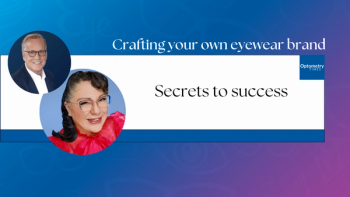
5 pearls for comanaging premium IOL patients
During the American Academy of Optometry's Academy 2014, Josh Johnston, OD, clinical director, Georgia Eye Partners, Atlanta, presented five pearls for successfully comanaging premium intraocular lens (IOL) patients.
Denver-During the
1. Plano outcome. Residual refractive error represents the number-one patient frustration. If patients have residual refractive error, especially with diffractive multifocal IOLs, he says, patients will not have the good intermediate and near vision they wanted.
“If you catch these folks early and educate them that you're going to fix this, these patients won't be as frustrated,” Dr. Johnston says. To that end, he suggested working with surgeons who include enhancement costs in their pricing. "At our clinic in Atlanta, if a patient has a verging cornea and we end up missing-which occurs about 10 percent of the time-we include the cost of LASIK or PRK for free. That's a good selling point-patients know LASIK, so they are very comfortable with that. We tell patients up front, we're going to be able to fix this if we miss."
2. Proactively treat ocular surface disease. “The
3. Preoperative counseling.
4. Properly screen candidates. This regard, he half-jokingly suggested avoiding extremely demanding patients such as those with more than three cats, rings, or divorces.
5. Pick the right IOL. With an expanding array of IOLs available, the optimal choice depends on the clinical situation and patient desires, says Dr. Johnston. For example, he says that toric lenses are a slam dunk for virtually everyone with astigmatism. Conversely, he says that accommodating IOLs tend to work well at long and intermediate distances; don't overpromise elsewhere.
Newsletter
Want more insights like this? Subscribe to Optometry Times and get clinical pearls and practice tips delivered straight to your inbox.


















































.png)


